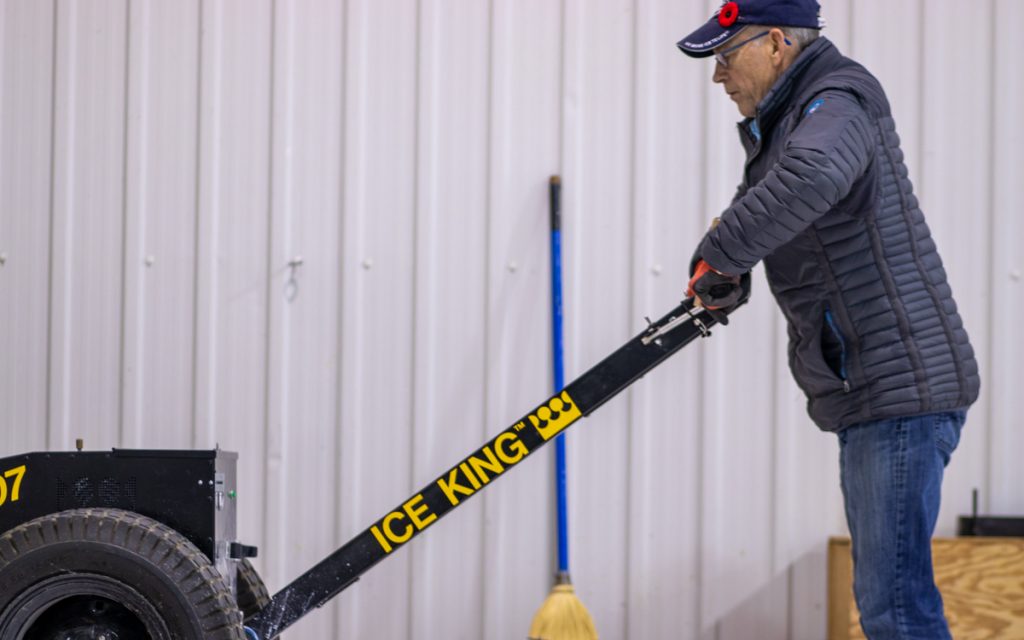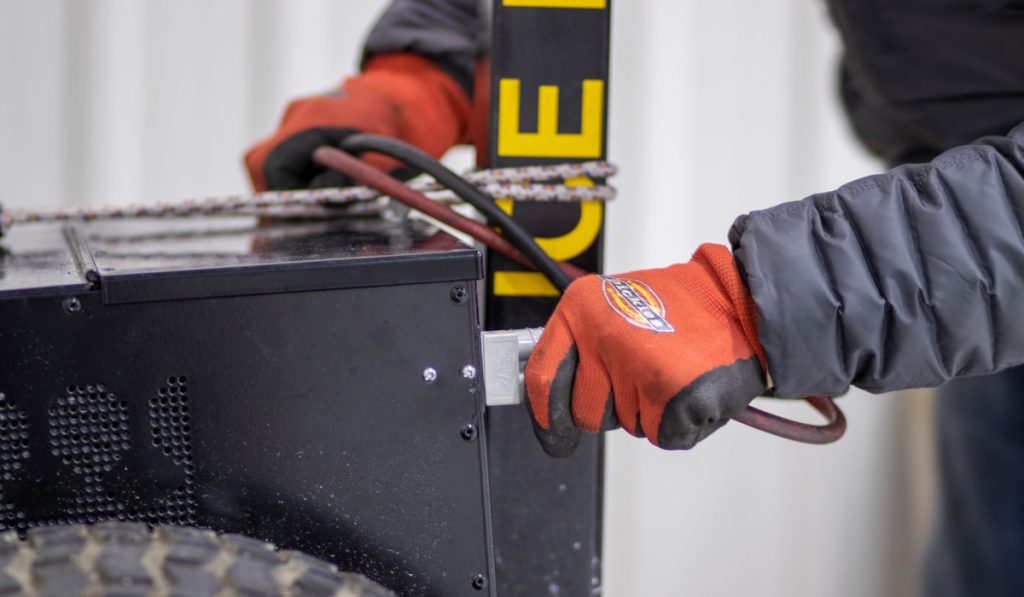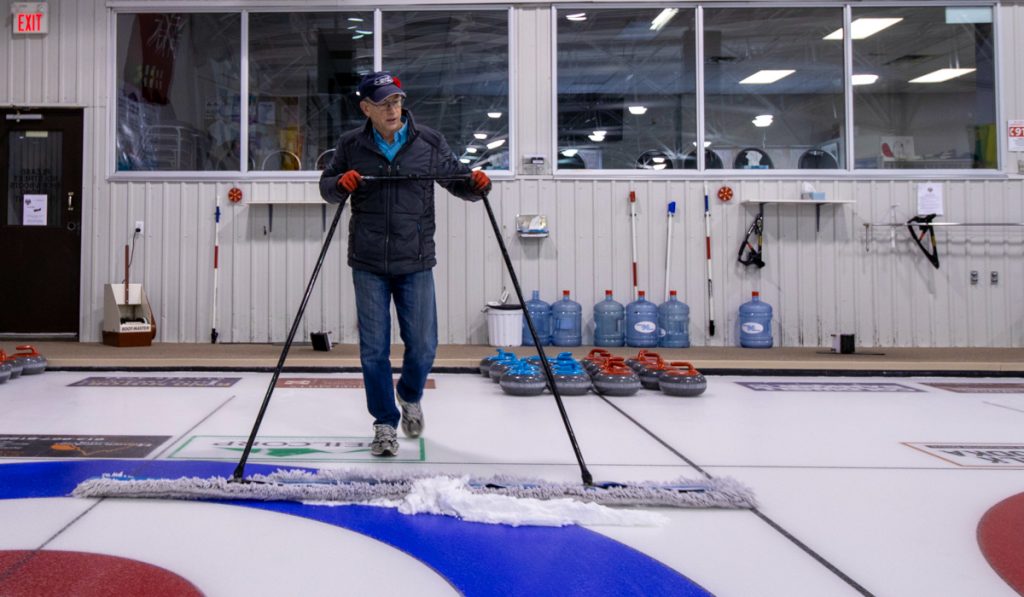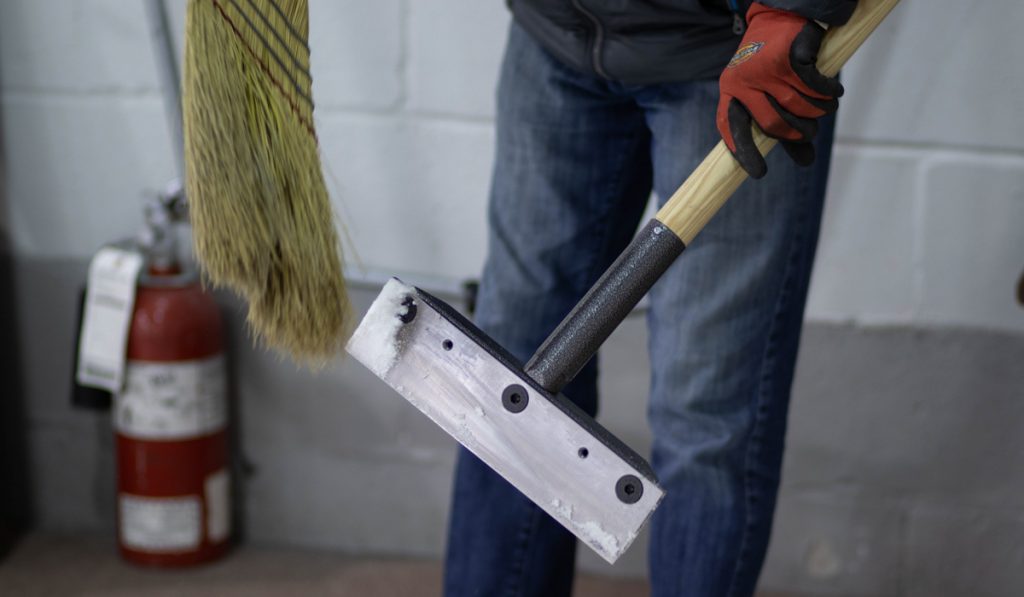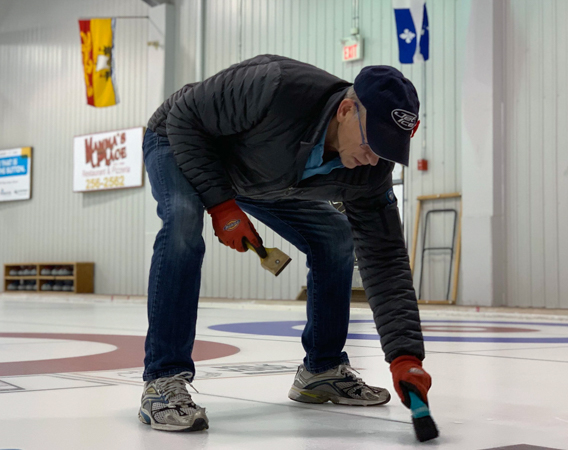Every morning, in cities and towns across Canada, curling club ice technicians dutifully scrape away worn ice and replace it with a coat of fresh ‘pebble’, making the surface ready for play. Rick Picard is one of the ice technicians at the Almonte Curling Club west of Ottawa.
Curling ice requires “meticulous” attention to detail, according to Picard. The process involves shaving off a thin layer of ice and replacing it with a mist of water that flash-freezes into small bumps covering the playing surface. Curling ice needs these bumps, known as pebble, to control the speed rocks travel down the ice and how much the rocks curl, says Picard.
Rick Picard carefully lowers an Ice King scraper on to the ice surface. The machine’s blade is precisely honed after each use to ensure it stays as sharp as possible for every scrape. [Photo © Sierra D’Souza Butts] Technicians then walk countless lengths up and down each sheet of ice. Picard navigates his scraper as close to the rocks as possible without hitting them with the blade. [Photo © Sierra D’Souza Butts] Ice technicians are central to the operation of a curling club. Many members of the Almonte Curling Club gave Picard a wave while he prepared the ice for their games. [Photo © John MacGillis] Once most of the scrape is finished, the Ice King scraper is moved back to the side and plugged in, ready to restart the cycle. Due to its size, this scraper effectively covers the sheets but it can’t fit in some of the narrower corners of the ice surface. [Photo © John MacGillis]
Technicians must pay meticulous attention to detail, such as looking for where a player may have touched the surface with a knee or a hand. That contact can melt the ice and potentially affect how rocks behave on that part of the surface. Picard sprays water on these spots to mitigate any damage. [Photo © John MacGillis]
Picard shaves away some impurities (rubber, fabric and other materials) off the ice surface. Heavily trafficked areas near the rings and where curlers slide become particularly tarnished and require more attention, Picard said. [Photo © Sierra D’Souza Butts]
Picard mops up the ice that has been scraped off and collects it in a wheelbarrow to be thrown out the door. At this point, all the pebble from previous games has been removed and the playing surface is now flat, like ice at a hockey rink. [Photo © Sierra D’Souza Butts] Ice technicians are just as diligent about cleaning their tools. Picard shakes the remainder of the snow off the mop with a broom handle. [Photo © Sierra D’Souza Butts] For spots that are too narrow for the large scraper, Picard shaves the pebble off by hand. This scraper is also meticulously cleaned after every use to keep it dry and rust-free. By taking care of his mops and blades, Picard is able to keep his equipment sharp and his ice in great shape. [Photo © John MacGillis] King of the Swing: A new coat of pebble is sprayed across the sheet of ice. Ice technicians shuffle up and down the sheets backwards and must maintain the same speed of both their feet and arm in order to create a smooth, consistent pebble, according to Picard. [Photo © John MacGillis]
